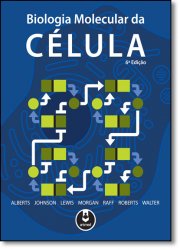Biologia Molecular Da Célula Alberts Preço

Encontre Biologia Molecular Da Celula Alberts - Livros no Mercado Livre Brasil. Descubra a melhor forma de comprar online. Daily 0.69 daily 0.69 daily 0.69 daily 0.69.
. Piancatelli, Daniela; Del Beato, Tiziana; Oumhani, Khadija; El Aouad, Rajae; Adorno, Domenico 2005-08-01 The MICA gene encodes a family of nonclassical major histocompatibility complex class I molecules.

Kleines Sofa Romeo und Julia Frank M bel top bar nav a nav top link body p top bar cart inner nav dropdown nav dropdown header nav a nav top link a cart link mobile sidebar ah1 h2 h3 h4 h5 h6 alt font body boxed body framed layout body masthead logo a img masthead logo masthead logo a masthead stuck move down.
Bioquimica Y Biologia Molecular
Data on MICA polymorphism in different populations are still limited. In the present study, MICA allele frequencies (af) were assessed in 82 unrelated healthy individuals from a Moroccan Berber population named Metalsa (ME) by means of sequence-based typing of exons 2, 3, 4, and 5. In consideration of the linkage disequilibrium existing between MICA and human leukocyte antigen (HLA) class I alleles, MICA/HLA-B, MICA/HLA-Cw, and MICA/HLA-A haplotype frequencies (hf) were estimated. A wide allelic distribution including 16 different MICA alleles was found in ME.

The most common MICA alleles were MICA.00801 (af = 0.268),.004 (0.232),.00902 (0.140),.00901 (0.085), and.00901 (0.073). The most common MICA/HLA-B haplotypes were MICA.004-B.4403 and MICA.009-B.50 (hf = 0.113 for both these haplotypes). Some known MICA and HLA-B associations were confirmed in this population.
Noteworthy was the high frequency of MICA.009 (af = 0.226); the high frequency of B.50 found in ME (af = 0.114) permitted us to evidence the associations of MICA.00902 with B.5001 (hf = 0.068) or.5002 (hf = 0.045), whereas MICA.00901 was mainly associated with B.5101 (hf = 0.038), which corresponds to the previously described association MICA.009/A6-HLA-B.51. This study extends the previous knowledge on MICA polymorphism to a North African white population and may have implications for disease associations and transplantation. Zhang Gengxin; Xie Zhidong; Bian Dongming; Sun Qian 2011-01-01 Deep space communications has played an important role in deep space exploration.Compared with common satellite and terrestrial communications, deep space communications faces more challenging environment.The paper investigated the unique features of deep space communications in detail,discussed the key technologies and its development trends for deep space communica- tions. Maule, Jake; Wainwright, Norm; Steele, Andrew; Monaco, Lisa; Morris, Heather; Gunter, Daniel; Damon, Michael; Wells, Mark 2009-10-01 A new culture-independent system for microbial monitoring, called the Lab-On-a-Chip Application Development Portable Test System (LOCAD-PTS), was operated aboard the International Space Station (ISS). LOCAD-PTS was launched to the ISS aboard Space Shuttle STS-116 on December 9, 2006, and has since been used by ISS crews to monitor endotoxin on cabin surfaces. Quantitative analysis was performed within 15 minutes, and sample return to Earth was not required.
Endotoxin (a marker of Gram-negative bacteria) was distributed throughout the ISS, despite previous indications that mostbacteria on ISS surfaces were Gram-positive corrected.Endotoxin was detected at 24 out of 42 surface areas tested and at every surface site where colony-forming units (cfu) were observed, even at levels of 4-120 bacterial cfu per 100 cm(2), which is below NASA in-flight requirements (3.78 EU per 100 cm(2)). Based upon data collected from the ISS so far, new culture-independent requirements (defined in EU) are suggested, which are verifiable in flight with LOCAD-PTS yet high enough to avoid false alarms.
The suggested requirements are intended to supplement current ISS requirements (defined in cfu) and would serve a dual purpose of safeguarding crew health (internal spacecraft surfaces.